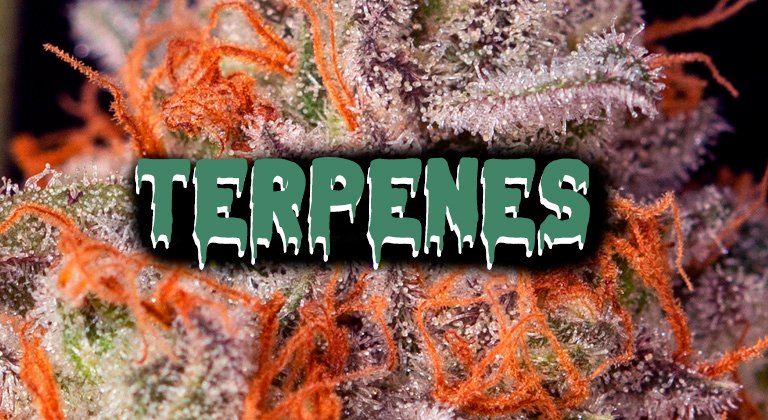Terpenes are aromatic and volatile organic compounds found in a wide variety of plants, including cannabis. They are responsible for the organoleptic characteristics of plants (fragance and flavor). They also play an important role in the plants’ defense mechanisms against external aggressors such as extreme temperatures, herbivores, various insects, and pathogens such as fungi, bacteria, and others.
Terpene analysis is not only important to identify the organoleptic and sensory characteristics of a plant, but also allows us to identify its therapeutic potential, especially in cannabis plants.

It’s chemical structure is formed by the union of isoprene units, a hydrocarbon made up of five carbon atoms. The union of two isoprene units gives rise to monoterpenes, which are very small and highly volatile compounds. When three or more isoprene units are combined, sesquiterpenes are obtained, which are less volatile due to their larger molecular size.
In nature, more than 20000 different terpenes can be found distributed throughout the plant kingdom, and more than 200 of them are present in the cannabis plant.
In rosponse to external stimulation, the cannabis plant reacts differently in areas preyed upon by insects and animals, modifying terpene production. Thus, the most volatile monoterpenes predominate in the flowers and serve to repel insects that can harm the plant or attract those that can promote pollination. In contrast, the less volatile and more bitter sesquiterpenes dominate the leaves to repel herbivorous animals or insects.
With changes in ambient temperatures, the cannabis plant also modifies its production, releasing greater quantities of terpenes at higher temperatures. This helps the plant withstand the heat, preventing dehydration.
Terpenes and Cannabinoids are biosynthesized in the plants’ Trichomes. Trichomes are filamentous structures that cover the entire plant and can be classified as glandular or non-glandular. Their distribution throughout the plant varies and depends on the mechanism in which each trichome species intervenes. Thus, glandular trichomes appear to predominate in inflorescences and are more specialized in cannabinoid production.
Although terpenes and cannabinoids are produced and stored in similar locations and have similar biosynthetic pathways, some trichomes appear to be more specialized in one task than the other.
The different types of terpenes and the proportion found in cannabis plants vary greatly and depend on several factors such as plant genetics and environmental conditions.
The «Entourage Effect» is a mechanism by which the components of the cannabis plant (such as cannabinoids, terpenes, and flavonoids) act synergistically with each other to modulate and enhance the plant’s overall effects, primarily through the action of major cannabinoids such as CBD and THC. For this reason, it is postulated that terpenes are not only responsible for the organoleptic characteristics of the plants but also participate in their therapeutic effects, each of which has been described as having its own specific beneficial effects that can be enhanced or modified in the presence or absence of other compounds.
The term «terpene» is very broad and also includes a subgroup known as terpenoids, which are modified terpenes. Terpenoids are terpenes that have been chemically altered through oxidation during drying and curing. «Terpenoid» is a word that better describes the flavor and aroma of buds, while «terpene» is more appropriate to talk about living plants.

How do Terpenes affect your high?
Why do Sativas, Indicas and Hybrids produce different effects?
The medicinal and psychoactive effects of marijuana are not only because of THC, CBD, and other cannabinoids effects. Terpenes also play an important role in regulating cannabis’s effects. While they don’t produce any psychoactivity on their own, some types of Terpenes can have important effects, such as Linalool, which can reduce anxiety and stress, and Limonene, which can boost energy levels, creativity, and motivation. In other words, marijuana strains rich in Linalool have a calming effect that relieves pain, while those rich in Limonene improve mood.










